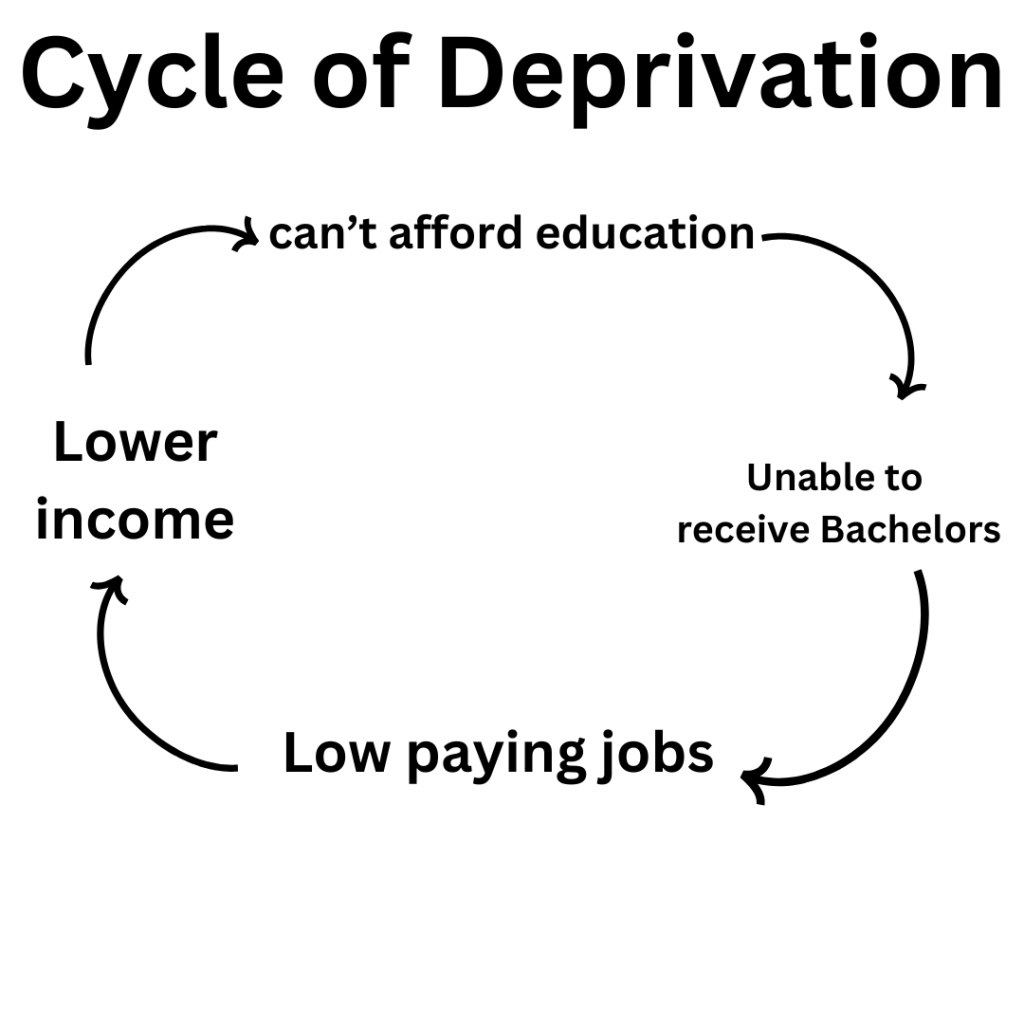
Access to education
Autistic people across the world have poorer access to education, worse educational outcomes than non-autistic pupils and are more likely to live in poverty. This links to the UN Sustainability goals of “reducing inequality” and “quality education”. This includes further education, where in the UK 50% of pupils go to University whereas only 8% of pupils with an IDP/EHCP (which includes many autistic pupils) go (Grant and Williams 2023).
This can mean that autistic pupils, who often already live in poverty, do not have the same access to education to enable them to leave poverty. This leads to a poverty cycle.

Autistic pupils are also likely to be considered “school refusers“, something the community prefers to term anxious non-attendance.
A report about autistic non-attendance showed that almost half of people who were surveyed were not supported in school. Reasons for non-attendance included anxiety, sensory processing differences, difficulties with staff, transitions, and low self-esteem (Williams 2022).
These are all issues that link back to the main characteristics of autism. Therefore, schools need to do better at supporting their autistic pupils to improve their educational outcomes.
What might help autistic pupils?
- Completing the e-learning modules created by Neurodivergence Wales (click here).
- Having a visual schedule to remind the autistic pupil what is happening that day.
- Support and reminders to keep on task.
- Movement breaks.
- Having a trusted adult for the autistic pupil to talk to about any anxieties or difficulties they are having.
- Extra time in exams.
- Extra time to process information.